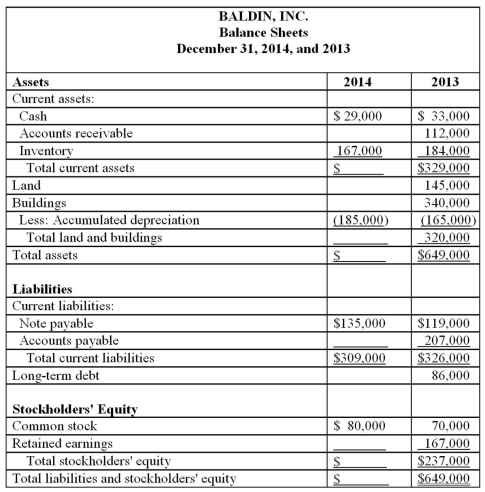Presented below is a partially completed balance sheet for Baldin, Inc., at December 31, 2014, together with comparative data for the year ended December 31, 2013. From the Statement of Cash Flows for the year ended December 31, 2014, you determine that:
• Net income for the year ended December 31, 2014, was $106,000.
• Dividends paid during the year ended December 31, 2014, were $42,000.
• Accounts receivable increased $14,000 during the year ended December 31, 2014.
• The cost of new buildings acquired during 2014, was $85,000.
• No buildings were disposed of during 2014.
• The land account was not affected by any transactions during the year, but the fair value of the land at December 31, 2014, is $210,000.  Required:
Required:
(a.) Complete the December 31, 2014, balance sheet.
(b.) Prepare a statement of cash flows for the year ended December 31, 2014.
Definitions:
Materials Price Variance
The difference between the actual cost of materials and the expected (standard) cost.
Raw Material
The basic material from which a product is made, used in the initial stages of production.
Materials Price Variance
The difference between the actual cost of materials and the standard cost multiplied by the quantities purchased.
Materials Quantity Variance
The difference between the actual quantity of materials used in production and the expected quantity, based on the standard cost.
Q1: Suppose your car is equipped with tire
Q1: If it is to be most useful
Q12: What is the osmolarity of a 2
Q19: Managerial accounting, as opposed to financial accounting,
Q19: Which acid has a lower pH? <br>A)
Q22: The inventory cost flow assumption describes the
Q30: A newspaper ad submitted and published this
Q31: Using VSEPR theory, predict the molecular shape
Q36: Presented below is the income statement
Q57: If the net present value of a